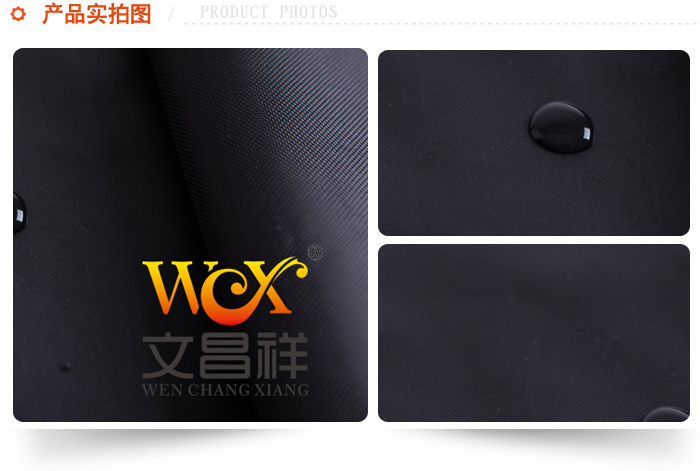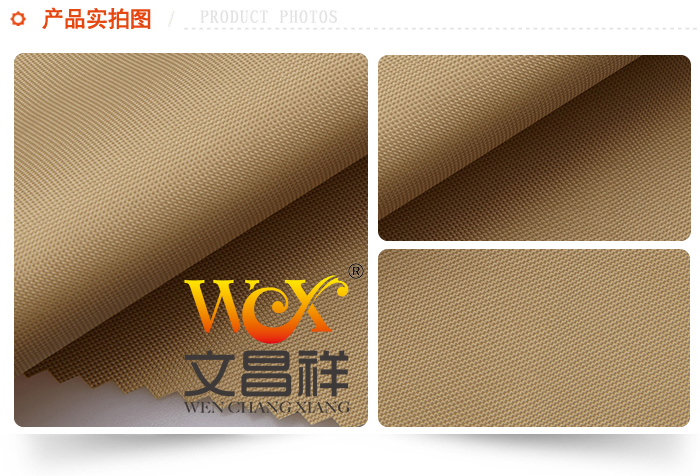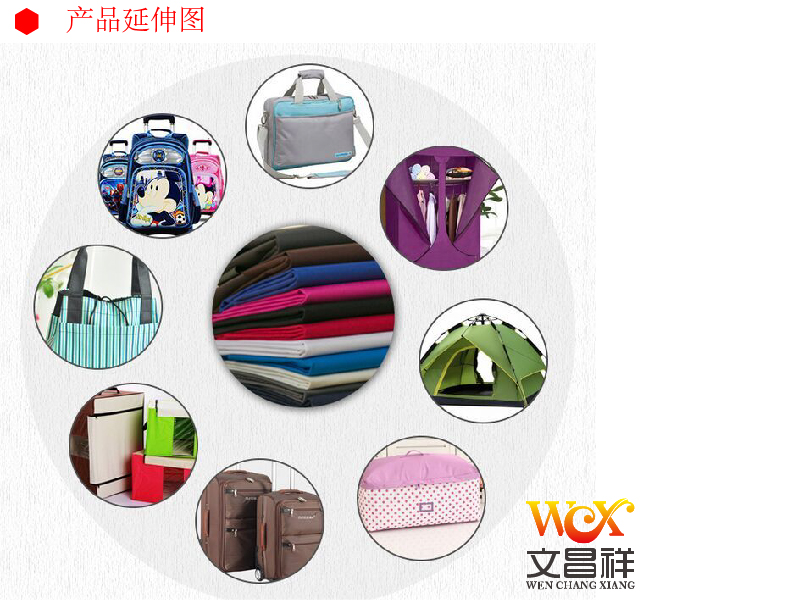210D represents the specification of Oxford cloth, D is the abbreviation of DENIER, a method of expressing the fineness of chemical fiber, which refers to 9000 meters long The common moisture regain of silk is measured in grams, also called denier. The larger the D, the thicker the yarn.

PVC, also known as polyvinyl chloride, is vinyl chloride monomer (VCM) in the presence of initiators such as peroxides and azo compounds; or by free radicals under the action of light and heat. Polymers formed by polymerization reaction mechanism. Vinyl chloride homopolymer and vinyl chloride copolymer are collectively called vinyl chloride resin. PVC can be used in many aspects when mixed with other things, such as clothing, bags, and shoes.

PU is actually polyurethane. Its properties are mainly wear resistance, solvent resistance and low temperature resistance (below -30℃), waterproof and breathable, windproof, soft and other properties. Generally, it is a milky white emulsion. It can be compounded with knitted fabrics, plain woven fabrics, non-woven fabrics and other fabrics to make various fabrics or linings. It can be compounded with two or more layers of films with different characteristics. The thin-coated PU products we usually come into contact with are mainly used for PU coating on outdoor clothing and luggage fabrics. Products such as imitation leather (artificial leather) and brushed imitation suede are also PU coating products. Polyurethane PU Coatings can form many multi-functional and high value-added textile products, which are widely used in clothing, decoration, military and other industries.
Oxford cloth is also called Oxford spinning. A traditional combed cotton fabric that originated in the United Kingdom and was named after Oxford University, Oxford cloth began around 1900. It uses finer combed high-count yarn as a double warp and is interwoven with a thicker weft yarn in a weft-heavy flat weave. It can be seen that 210D is the specification of Oxford cloth, and PVC and PU are just the post-processing methods of Oxford cloth. Generally, Oxford cloth has no strength, is not waterproof, and is not light-fast. The combination of PVC, PU and Oxford cloth has achieved the characteristics of industrial Oxford cloth, making Oxford cloth more useful.

210D Oxford cloth (PVC/PU) fabric produced by textiles is suitable for lining fabrics such as tents, bags, shoes, rehabilitation equipment, outdoor sports goods, strollers, etc. Its characteristics include good waterproofness, high color fastness, strong tear resistance, and long service life. Consultation hotline: 400-837-9793</p







